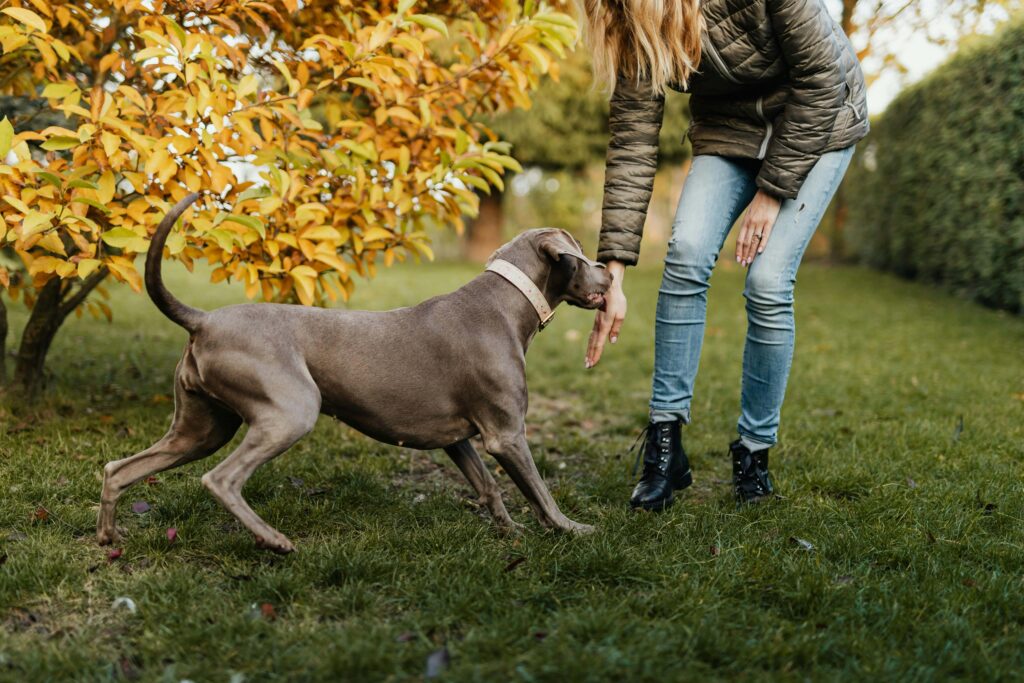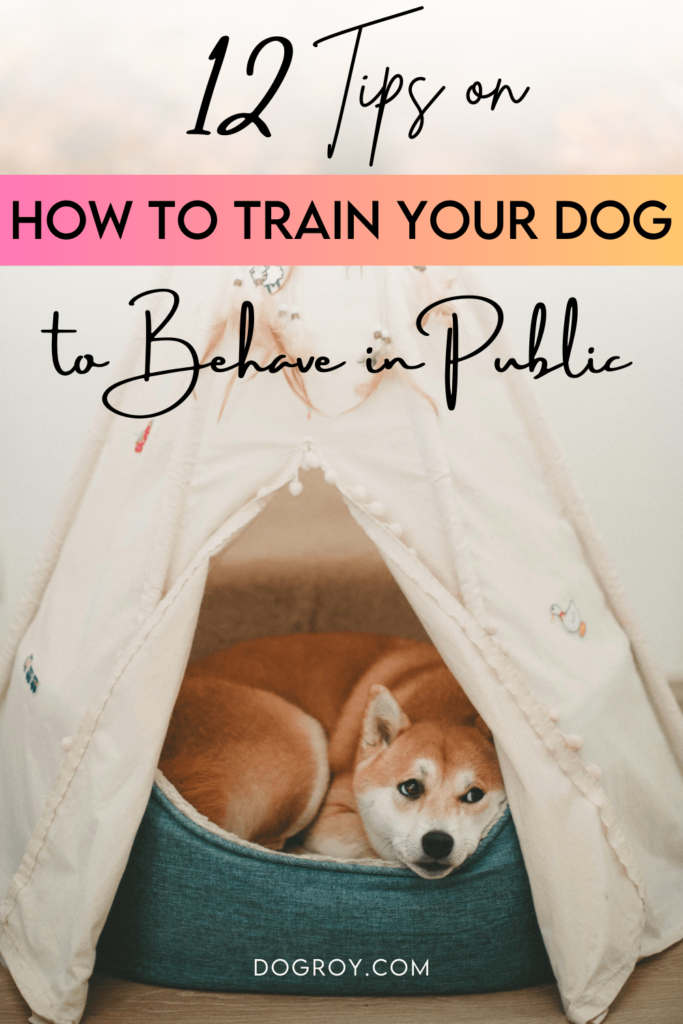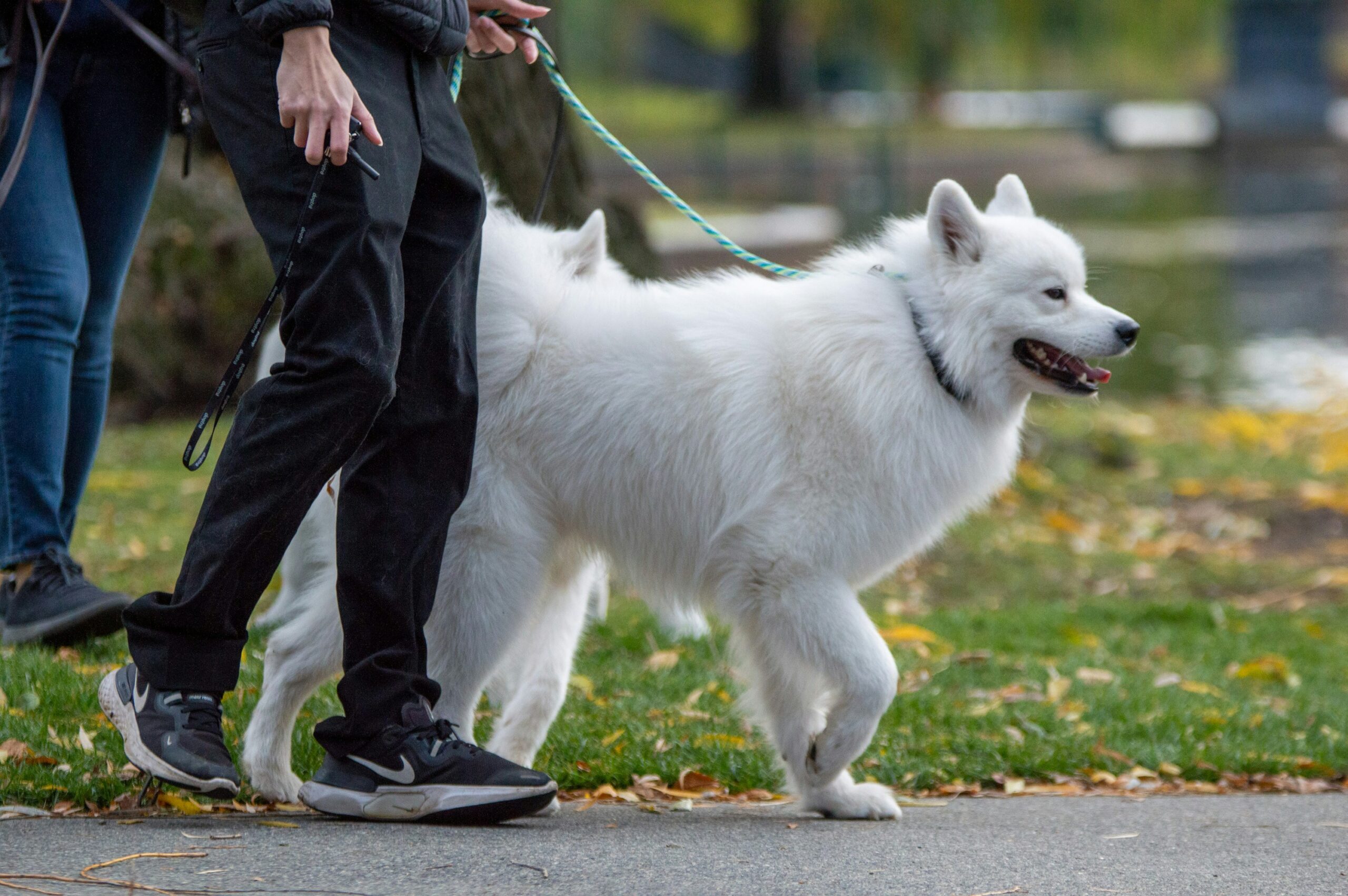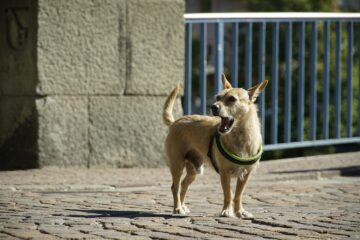Stepping out in public with your dog should be a joyous experience, but the reality for many pet owners involves the challenges of managing unruly behavior.
The journey of training your dog to behave in public is a crucial investment in a harmonious relationship and stress-free outings.
In this comprehensive guide, we’ll delve into 12 practical tips on how to train your dog to behave in public, empowering you with the tools to transform your canine companion into a well-mannered and sociable participant in the wider world.
Table of Contents
Mastering Public Etiquette: How to Train Your Dog to Behave in Public

1] Leash Training Basics
Commencing leash training at home lays the groundwork for establishing proper public etiquette.
Focus on teaching your dog to walk calmly on a leash, discouraging behaviors like pulling or lunging.
Mastering leash training in familiar surroundings forms the basis for a well-behaved companion in public spaces, ensuring smoother and more controlled interactions.
2] Positive Exposure
Gradual exposure to public environments is crucial for your dog’s socialization.
Begin in quieter areas, allowing your dog to acclimate to new surroundings.
As your dog becomes more comfortable, gradually increase exposure to areas with higher levels of distraction.
Tip: “Create positive associations by rewarding calm behavior during public exposure.”
This incremental approach aids in building your dog’s confidence and adaptability, minimizing potential stressors in public settings.
3] Basic Commands
The foundation of public etiquette lies in your dog’s responsiveness to basic commands.
Commands like “sit,” “stay,” and “come” serve as valuable tools for managing your dog’s behavior in public spaces.
Reinforcing obedience ensures that your dog remains under control, promoting positive interactions and a harmonious atmosphere when out and about.
4] Socialization Opportunities
Facilitate controlled socialization opportunities to expose your dog to diverse people, dogs, and situations.
Positive interactions during socialization contribute to your dog’s ability to navigate public spaces with ease.
A well-socialized dog is more likely to exhibit friendly and appropriate behavior, fostering a positive relationship with the surrounding environment.
• Facilitate controlled socialization for exposure to people, dogs, and situations • Positive interactions enhance your dog's ability to navigate public spaces • Well-socialized dogs are more likely to exhibit friendly and appropriate behavior • Fosters a positive relationship with the surrounding environment
5] Reward-Based Training

Implementing a reward-based training system is a powerful tool for shaping desired behaviors in public.
Reward your dog for displaying good behavior, such as walking politely on a leash or maintaining composure in crowded areas.
Positive reinforcement strengthens the connection between good behavior and pleasant outcomes, motivating your dog to consistently exhibit positive conduct.
6] Stay Calm and Confident
Your demeanor significantly influences your dog’s behavior, especially in public.
Maintaining a calm and confident presence communicates a sense of control to your dog.
Tip: “Project a sense of control, reassuring your dog and promoting a composed attitude.”
This, in turn, reassures your dog and encourages a composed attitude, contributing to a positive and well-behaved demeanor in various public settings.
7] Know Your Dog’s Limits
Understanding your dog’s comfort level is essential for successful public training.
Be attentive to signs of stress or anxiety, and avoid exposing your dog to overwhelming situations.
Gradually introducing challenges while respecting your dog’s limits ensures a positive training experience, fostering gradual progress and increased confidence in public spaces.
8] Consistent Reinforcement
Consistency is paramount in dog training, particularly in public scenarios.
Apply training principles consistently across various environments.
Reinforce desired behaviors promptly and address deviations to establish clear expectations.
Consistent training builds a reliable foundation, promoting reliable behavior during public outings.
In the tapestry of consistency, your dog’s behavior weaves into a masterpiece of polished public etiquette.
9] Use Distraction Techniques
Equipping yourself with distraction techniques is essential for redirecting unwanted behaviors in public.
Carry toys or treats to shift your dog’s focus when necessary.
Distraction not only prevents undesirable actions but also keeps your dog engaged in positive activities, reinforcing good behavior in different public settings.
10] Practice Patience
Public training is a gradual process that requires patience.
Allow your dog the necessary time to adapt to different environments.
Celebrate small victories and progress, reinforcing the positive association with public outings.
Practicing patience ensures a positive learning experience for your dog, contributing to long-term behavioral success.
• Public training requires patience; allow your dog time to adapt • Celebrate small victories to reinforce positive associations • Practice patience for a positive learning experience • Contributes to long-term behavioral success
11] Enroll in Training Classes
Consider enrolling in training classes specifically tailored to public etiquette.
Professional trainers offer expert guidance, addressing specific challenges encountered in public settings.
These classes provide a structured and controlled environment for refining your dog’s behavior, offering personalized solutions to enhance their conduct in crowded areas.
- Professional trainers offer specialized guidance for public training.
- Structured classes provide controlled environments for practical learning.
12] Regular Exposure
Maintain regular exposure to public spaces to reinforce and solidify good behavior.
Consistent outings help to establish positive habits, ensuring that your dog remains well-behaved in a variety of public settings.
Regular exposure contributes to your dog’s confidence and adaptability, promoting a positive and confident demeanor in public environments over time.
Tip: “Regular exposure helps your dog remain confident and composed in public environments.”
How to Train Your Dog to Behave in Public: FAQs
Can any dog be trained to behave in public?
Yes, with proper training and consistent efforts, virtually any dog can be trained to behave well in public. The key is to start early and practice regularly.
How long does it take to train a dog for public behavior?
The duration varies based on the dog’s temperament and prior training. With consistent efforts, positive results can often be observed within a few weeks. Patience is crucial.
Should I train my dog in different types of public spaces?
Yes, exposing your dog to various public environments is essential for well-rounded training. This includes parks, busy streets, and dog-friendly establishments.
What if my dog shows anxiety in public?
If your dog exhibits signs of anxiety, consult with a professional trainer for guidance. They can assess the specific triggers and provide strategies to address anxiety-related behaviors.

Conclusion:
Mastering the art of training your dog to behave in public not only elevates your shared experiences but also enhances the overall companionship between you and your furry friend.
By incorporating these 12 tips on How to Train Your Dog to Behave in Public, you’ll create a harmonious experience during outings and strengthen the bond with your furry friend.
Through consistent training, patience, and a commitment to fostering good manners, you can confidently enjoy the company of your well-behaved dog in various public settings, creating lasting memories together.





